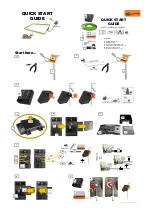
96
DANGER: CHIMNEY AND CONNECTIONS
Incorrectly installed connections and initial operation of the chimney without
a professional inspection pose safety risks such as fire hazard and smoke
leakage:
►
Only connect your stove to a chimney which meets the
respective local and national regulations.
►
All connections and joints between the chimney and stove must
be tight.
► Consult an officially approved speciality company for the
arrangement and installation.
► Remove all flammable or heat-sensitive building materials on
and around the connection openings of the flue pipe.
► Replace building materials with heat-resistant, non-flammable
materials.
► Observe the relevant national fire code.
CAUTION: RISK OF DEFLAGRATION
HASE stoves meet very high standards with respect to them
being tight.
This ensures efficient and low pollution combustion. However, since it is so
tight, this does increase the risk of deflagration. A risk of deflagration occurs
due to highly degassing fuel and large amounts of these flammable gasses
accumulating in the firebox and the flue gas which then suddenly ignite.
This can be caused by e.g. delayed fuel input if the firebox has already
cooled down and the basic firebed still being hot and large logs thickly
covering the embers, which delays ignition of the wood gas presence.
To prevent deflagration:
►
Try to add fuel at the optimal time.
►
Ensure the logs are spaced 1-2 cm apart.
► Be sure not to fully cover the firebed when adding logs.
►
When adding fuel very late, always use thin logs and space
them adequately.
WARNING: CHIMNEY FIRE
In the event of a chimney fire:
► Call the emergency number for the fire brigade!
► Remove flammable objects from the chimney!
► Never extinguish the fire with water!
►
Exit the building and alert any neighbours.
► Wait for the fire brigade!
►
Notify your chimney sweep!
► After a chimney fire the entire system
(stove, flue gas system and supply air duct) must be
checked for leaks.
CAUTION: HEATING MALFUNCTIONS
When using too much fuel in the stove (overload), the controller fails, or the
LED shows error messages:
► Keep the firebox door closed!
►
Never extinguish the burn-off with water!
► Allow the fire to burn out controlled!
CAUTION: FUNCTION CHECK
Check the functionality of the controller each time before using the stove:
►
The status light on the control panel must light up blue.
2 Product specifications
2.1 Intended use
The stove is a fireplace stove for temporary burning as per DIN EN 13240,
Category 1 a) (fireplace stove with closed firebox doors).
The stove serves heating the ambient air in suitable living spaces.
The iQ technology is a combustion control for roomheaters fired by solid fuel
without hot water production EN 13240:2001/A2:2004/AC:2007
The iQ technology automatically controls all combustion air settings to
ensure the best low-emission combustion.
Installation and operation in rooms without observing the safety distances
and without secure connection to the chimney is prohibited.
The prescribed fuel quantity of 1.4 kg for operation at the rated load (see
chapter “6.5.4 Amount to add for heating”) pertains to a combustion period of
approx. 45 min. as per DIN EN 13240.
Continuous operation (adding large amounts of fuel to extend the combustion
period) is prohibited:
► Observe the specifications in the operating instructions.
►
Do not exceed the maximum amount of fuel.
►
Never leave the stove burning unattended.
► Only operate the stove with the firebox
door closed.
NOTE: FUELS
The fireplace stove is not a waste incinerator.
Never use fuels such as e.g. painted wood, chip board, plastics,
wet wood, etc.:
► Only use the approved fuels specified in the operating
instructions.
The fireplace stove requires regular inspections
(see chapter “7 Maintenance”).
Failure to comply with the intended use may damage your stove.
Any improper use is prohibited. This will void the warranty.
Summary of Contents for SILA PLUS iQ
Page 2: ...2 ...
Page 22: ...22 Bild 41 Bild 42 Bild 43 Bild 44 Bild 45 Bild 46 Bild 47 Bild 48 ...
Page 32: ...32 ...
Page 33: ...33 fr Nous vous souhaitons d agréables moments de détente au coin du feu HASE ...
Page 52: ...52 Fig 41 Fig 42 Fig 43 Fig 44 Fig 45 Fig 46 Fig 47 Fig 48 ...
Page 62: ...62 ...
Page 82: ...82 fig 41 fig 42 fig 43 fig 44 fig 45 fig 46 fig 47 fig 48 ...
Page 92: ...92 ...
Page 140: ...140 afb 41 afb 42 afb 43 afb 44 afb 45 afb 46 afb 47 afb 48 ...
Page 150: ...150 ...
Page 170: ...170 obr 41 obr 42 obr 43 obr 44 obr 45 obr 46 obr 47 obr 48 ...
Page 180: ...180 ...
Page 200: ...200 rys 41 rys 42 rys 43 rys 44 rys 45 rys 46 rys 47 rys 48 ...
Page 210: ...210 ...
Page 230: ...230 obr 41 obr 42 obr 43 obr 44 obr 45 obr 46 obr 47 obr 48 ...
Page 240: ...240 ...
Page 241: ...241 ...
Page 242: ...242 ...
Page 244: ...www hase de ...
















































